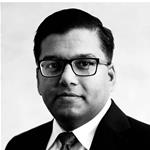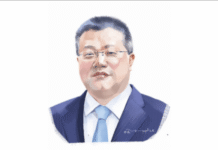![General Ershad: The deposed dictator who became kingmaker Bangladesh's former military ruler Hossain Mohammad Ershad died on July 14, 2019 [File: Reuters]](https://www.aljazeera.com/mritems/imagecache/mbdxxlarge/mritems/Images/2019/7/18/e6feb8f7060b42da824cf40ee4aab0a7_18.jpg)
General Hussain Muhammad Ershad, the military dictator of Bangladesh for most of the 1980s, died on July 14 in Dhaka. He was 89 years old. Ershad’s peaceful death due to old age marked an unexpectedly mundane end to one of the most controversial but also consequential political careers in Bangladesh, especially given that some of his peers ended up assassinated or jailed for life.
In Bangladeshi political vernacular, only Ershad is referred to as “the dictator”, even though the country has been governed by leaders with varying degrees of dictatorial aspirations since the 1950s.
Older Bangladeshis often blame General Ershad’s proclamation of martial law in 1982 for destroying the country’s nascent but pluralistic democracy, initiated by his predecessor General Ziaur Rahman.
But for the younger generations who have no memories of Ershad’s rule, he is remembered merely as a political opportunist, an unreliable but potent political dead-horse – someone who was not capable of becoming president himself, but who helped decide to whom the state power went next. Young Bangladeshis, who watched their country plunge deeper and deeper into autocracy in the last decade, will remember Ershad as more of an enabler of autocracy than an autocrat himself – owing to his persistent support for the brute and illiberal government currently in charge of the country.
The rise of a master opportunist
Ershad was born in West Bengal in British India in 1930. His family migrated to present-day Bangladesh in 1948, which was then part of Pakistan, following the end of the British colonial rule and partition of India along religious lines. He was commissioned into the Pakistan Army in 1952 and soon became a competent military officer. He was safely stationed in West Pakistan during Bangladesh’s bloody Liberation War against Pakistan and only returned to Bangladesh two years after its independence, in 1973.
In 1975, then president Ziaur Rahman appointed Ershad, a soft-spoken and flamboyant officer, as the chief of army staff, for reasons unknown to many at that time. Ershad remained loyal to President Rahman for the rest of his life.
Following Rahman’s death in 1981, his Vice President Abdus Sattar automatically became acting president and swiftly called an election. As the candidate of the ruling Bangladesh Nationalist Party, Sattar easily won two thirds of the vote and officially became the country’s new president within the same year. However, as an accidental president at an advanced age, he failed to end the squabbling within the civilian leadership and gain the trust of the military. Ershad seized this opportunity and ousted the president with a disciplined, yet protracted, military coup, which forced Sattar to gradually and peacefully depart the scene.
Upon taking power in 1982, lacking any political lineage or credibility, Ershad largely followed Rahman’s centrist policies both on the domestic and international arenas. He also continued Rahman’s gradual Islamisation of Bangladesh mostly through his political rhetoric and improved relations with Islamic nations in the Gulf and the Middle East and remained a staunchly pro-American and pro-Indian.
Being a pro-Islamic ruler, who made Islam the national religion of Bangladesh, Ershad had sought to appease the cultural sensitivities of geopolitically important India. Utilising his penchant for poetry and pomp, the general made useful friends within the Indian cultural and political elites, who remained effusive about him to this day.
When he decided to start his own political party, he had to strategically borrow senior leaders from a variety of political movements and parties, as he had no political capital of his own. He appointed prime ministers of various political convictions, including a pro-China Maoist.
Ershad’s ascent to power, despite meeting little resistance at that time, sowed the seeds of political turbulence for decades to come. Although not as tyrannical as some of the worst dictators of his era, he destroyed Bangladesh’s chances of becoming a functioning democracy while in office and facilitated the country’s autocratic plunge once he became a civilian politician.
Ershad was forced to leave office in 1990 by a popular uprising orchestrated by two of his political opponents: Bangladesh Nationalist Party leader Begum Khaleda Zia, and Awami League leader Sheikh Hasina, the women who later came to be known as the Battling-Begums of Bangladesh. At that time, pro-democracy sentiments were dominating the public scene as a democracy wave was sweeping across the world.
Despite all their pro-democracy pledges, the successive regimes of the Battling Begums that came after Ershad’s inglorious departure became increasingly more illiberal, abusive, and corrupt. Over the past three decades, there has been a consistent rise in arrests of journalists, closures of newspapers and media outlets, stifling of academic freedoms, arbitrary detentions, and killing and jailing of political activists. And Ershad, despite not being in power himself, played an important role in his country’s descent into autocracy.
Ershad, the kingmaker
After being deposed from power, Ershad was sent to jail on corruption charges, but he still managed to contest and win an election from behind bars in 1991. He ran once again from jail in the 1996 elections and this time he not only won, but also emerged as kingmaker when the Awami League fell five seats short of an absolute majority to form a government and asked the former military dictator for help.
Ershad agreed to side with the Awami League and formed a coalition despite repeated offers from the Bangladesh Nationalist Party (BNP) to form a coalition with them, instead. Such shameless jockeying for Ershad’s support by the two major political parties only five years after forcing him out of power not only rehabilitated the former dictator but also made him a factor in all the future political horse-trading in Bangladesh. He was released from jail in 1997.
In the following years, Ershad was repeatedly courted by the BNP to switch sides. The story got much grimmer in 2013, as not only the BNP but all opposition parties looked up to the former dictator to save Bangladesh’s dying democracy by finally abandoning the Awami League and joining the opposition’s boycott of the elections.
Despite all their efforts, however, Ershad stuck with Sheikh Hasina’s Awami League party in 2013 and again in 2018, providing her government crucial political legitimacy, even when most local and international observers concluded that Bangladesh was veering towards a one-party totalitarian system of government. Perhaps his innate opportunism or his time-tested survival instincts led to such unfortunate decisions at each of these crucial junctures in the country’s recent history. Making shameless alliances with the ruling party provided him and his rag-tag political party endless benefits.
While his pompous lifestyle and numerous love affairs even at an advanced age made Ershad a laughingstock in public, his cunning and opportunistic political jockeying kept him lethally potent on the political scene for nearly four decades. Over the past four decades, he demonstrated he was a master of political survival – first as a dictator and then as a kingmaker.
The views expressed in this article are the author’s own and do not necessarily reflect Al Jazeera’s editorial stance.
The article appeared in www.aljazeera.com on 18 July 2019










